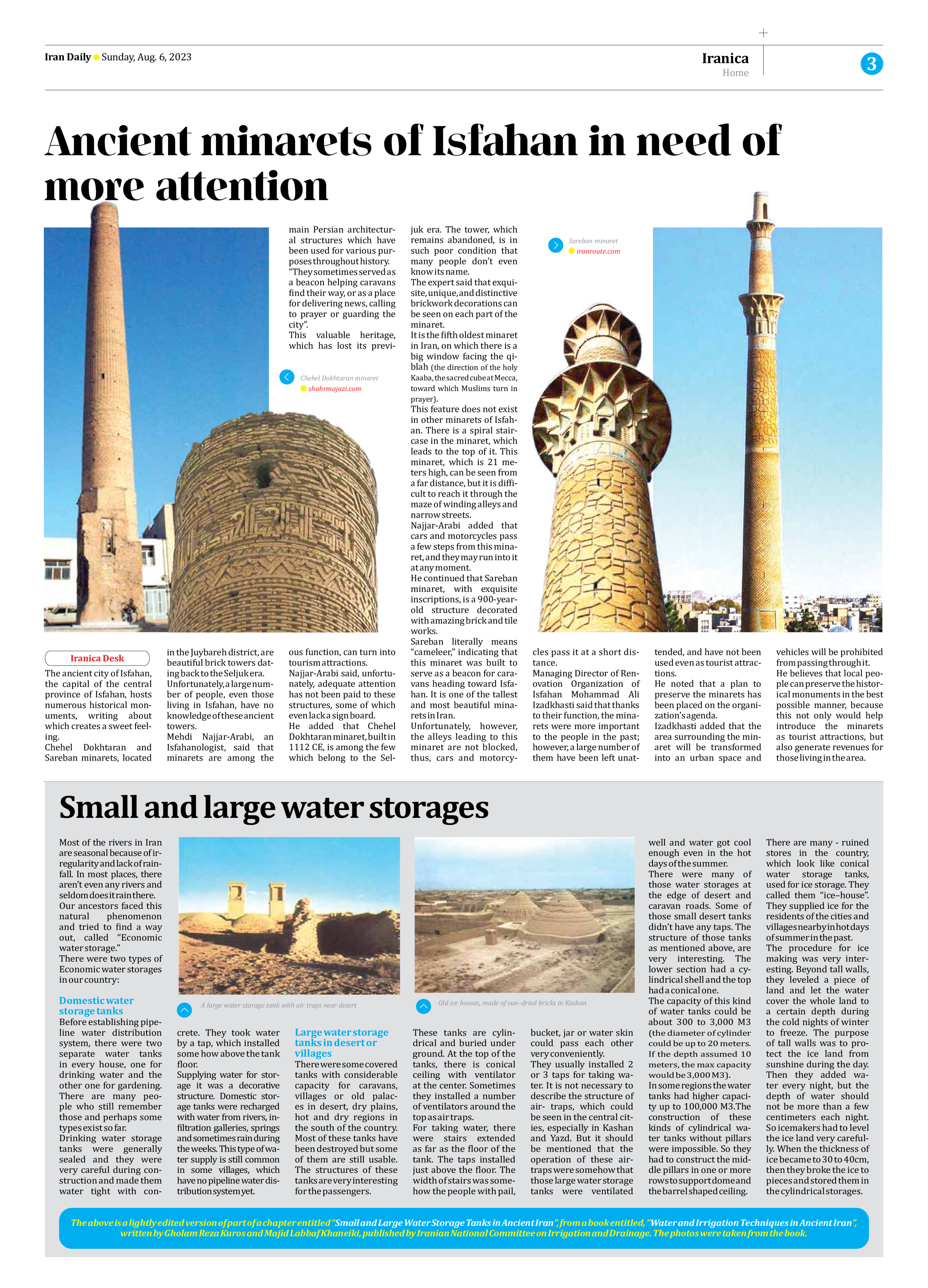
Small and large water storages
Most of the rivers in Iran are seasonal because of irregularity and lack of rainfall. In most places, there aren’t even any rivers and seldom does it rain there.
Our ancestors faced this natural phenomenon and tried to find a way out, called “Economic water storage.”
There were two types of Economic water storages in our country:
Domestic water storage tanks
Before establishing pipeline water distribution system, there were two separate water tanks in every house, one for drinking water and the other one for gardening. There are many people who still remember those and perhaps some types exist so far.
Drinking water storage tanks were generally sealed and they were very careful during construction and made them water tight with concrete. They took water by a tap, which installed some how above the tank floor.
Supplying water for storage it was a decorative structure. Domestic storage tanks were recharged with water from rivers, infiltration galleries, springs and sometimes rain during the weeks. This type of water supply is still common in some villages, which have no pipeline water distribution system yet.
Large water storage tanks in desert or villages
There were some covered tanks with considerable capacity for caravans, villages or old palaces in desert, dry plains, hot and dry regions in the south of the country. Most of these tanks have been destroyed but some of them are still usable. The structures of these tanks are very interesting for the passengers.
These tanks are cylindrical and buried under ground. At the top of the tanks, there is conical ceiling with ventilator at the center. Sometimes they installed a number of ventilators around the top as air traps.
For taking water, there were stairs extended as far as the floor of the tank. The taps installed just above the floor. The width of stairs was somehow the people with pail, bucket, jar or water skin could pass each other very conveniently.
They usually installed 2 or 3 taps for taking water. It is not necessary to describe the structure of air- traps, which could be seen in the central cities, especially in Kashan and Yazd. But it should be mentioned that the operation of these air-traps were somehow that those large water storage tanks were ventilated well and water got cool enough even in the hot days of the summer.
There were many of those water storages at the edge of desert and caravan roads. Some of those small desert tanks didn’t have any taps. The structure of those tanks as mentioned above, are very interesting. The lower section had a cylindrical shell and the top had a conical one.
The capacity of this kind of water tanks could be about 300 to 3,000 M3 (the diameter of cylinder could be up to 20 meters. If the depth assumed 10 meters, the max capacity would be 3,000 M3).
In some regions the water tanks had higher capacity up to 100,000 M3.The construction of these kinds of cylindrical water tanks without pillars were impossible. So they had to construct the middle pillars in one or more rows to support dome and the barrel shaped ceiling.
There are many - ruined stores in the country, which look like conical water storage tanks, used for ice storage. They called them “ice–house”. They supplied ice for the residents of the cities and villages nearby in hot days of summer in the past.
The procedure for ice making was very interesting. Beyond tall walls, they leveled a piece of land and let the water cover the whole land to a certain depth during the cold nights of winter to freeze. The purpose of tall walls was to protect the ice land from sunshine during the day. Then they added water every night, but the depth of water should not be more than a few centimeters each night. So icemakers had to level the ice land very carefully. When the thickness of ice became to 30 to 40cm, then they broke the ice to pieces and stored them in the cylindrical storages.
The above is a lightly edited version of part of a chapter entitled “Small and Large Water Storage Tanks in Ancient Iran”, from a book entitled, “Water and Irrigation Techniques in Ancient Iran”, written by Gholam Reza Kuros and Majid Labbaf Khaneiki, published by Iranian National Committee on Irrigation and Drainage. The photos were taken from the book.







